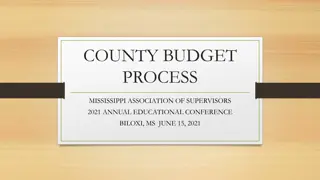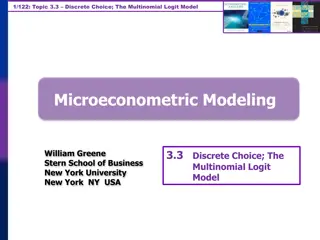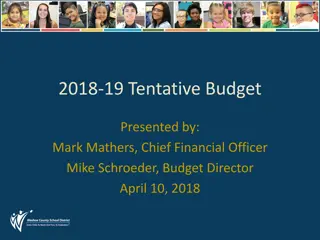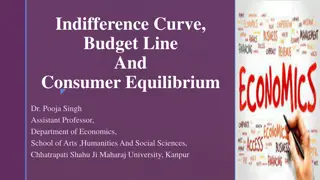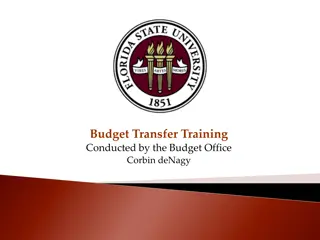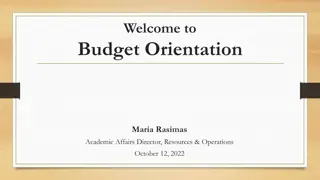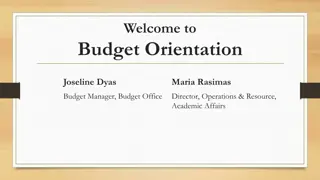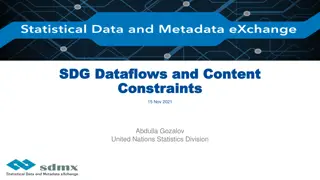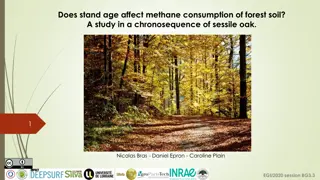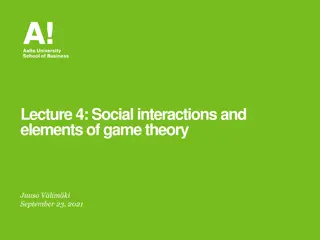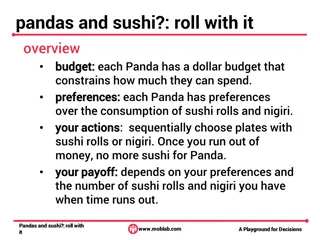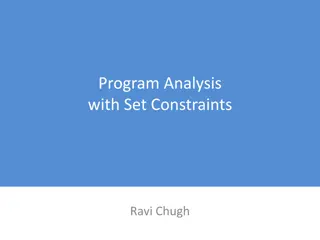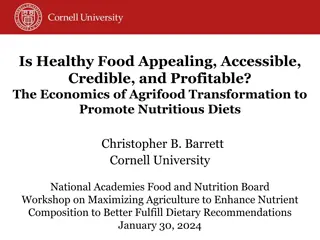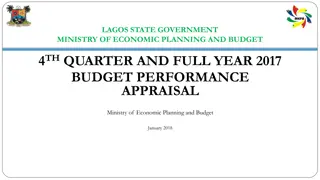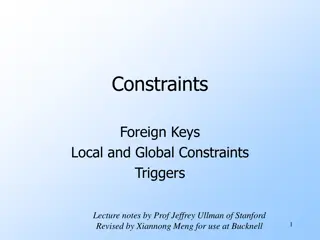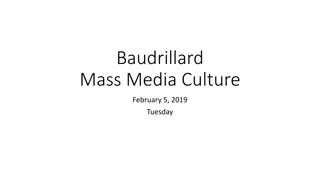Understanding Economic Choices: Consumption, Budget Constraints, and Preferences
Explore the concept of scarcity in economics and how individuals make trade-offs in choosing what to consume, work hours, and intertemporal decisions. Learn about budget constraints, the impact of income and prices, and how personal preferences shape decision-making along labor-leisure constraints to maximize utility.
Download Presentation

Please find below an Image/Link to download the presentation.
The content on the website is provided AS IS for your information and personal use only. It may not be sold, licensed, or shared on other websites without obtaining consent from the author. Download presentation by click this link. If you encounter any issues during the download, it is possible that the publisher has removed the file from their server.
E N D
Presentation Transcript
Ch 02 Taylor: Principles of Microeconomics 3e Textbook Media Press 1
Choosing What to Consume The real world is one of scarcity That is, a world in which people s desires exceed what is possible. As a result, economic behavior involves trade- offs in which individuals, firms, government, and society must give up things that they desire to obtain other things that they desire more. Ch 02 Taylor: Principles of Microeconomics 3e Textbook Media Press 2
Choosing What to Consume (2) Individuals face three main categories of trade- offs: the consumption choice of what quantities of goods to consume the labor-leisure choice of what quantity of hours to work, and the intertemporal choices that involve costs in the present and benefits in the future, or benefits in the present and costs in the future. Ch 02 Taylor: Principles of Microeconomics 3e Textbook Media Press 3
A Consumption Choice Budget Constraint The budget constraint, sometimes called the opportunity set, illustrates the range of choices available. The slope of the budget constraint is determined by the relative price of the choices. Choices beyond the budget constraint are impossible. Choices inside the budget constraint are wasteful. Ch 02 Taylor: Principles of Microeconomics 3e Textbook Media Press 4
How Changes in Income and Prices Affect the Budget Constraint Ch 02 Taylor: Principles of Microeconomics 3e Textbook Media Press 5
Personal Preferences Determine Specific Choices Ch 02 Taylor: Principles of Microeconomics 3e Textbook Media Press 6
Making a Choice Along the Labor-Leisure Budget Constraint People will choose along their budget constraints in a way that maximizes their satisfaction or utility, which is based on their own distinctive personal preferences. Ch 02 Taylor: Principles of Microeconomics 3e Textbook Media Press 7
Ch 02 Taylor: Principles of Microeconomics 3e Textbook Media Press 8
Making a Choice Along the Labor-Leisure Budget Constraint Ch 02 Taylor: Principles of Microeconomics 3e Textbook Media Press 9
Interest Rates: The Price of Intertemporal Choice An interest rate has three components: the risk premium to cover the risk of not being repaid the rate of expected inflation, and the time value of money, as compensation for waiting to spend. Ch 02 Taylor: Principles of Microeconomics 3e Textbook Media Press 10
The Power of Compound Interest The formula for how compound interest accumulates over time is: (Present amount) (1 + Interest rate)number of years = Future amount. Ch 02 Taylor: Principles of Microeconomics 3e Textbook Media Press 11
Opportunity Cost Opportunity cost measures cost by what is given up in exchange. Sometimes opportunity cost can be measured in money But it is often useful to consider whether time should be included as well, Or to measure it in terms of the actual resources that must be given up. Ch 02 Taylor: Principles of Microeconomics 3e Textbook Media Press 12
Marginal Analysis Most economic decisions and trade-offs are not all-or-nothing. Instead, they involve marginal analysis Which means they are about decisions on the margin, involving a little more or a little less. Ch 02 Taylor: Principles of Microeconomics 3e Textbook Media Press 13
Marginal Decision-Making and Diminishing Marginal Utility The law of diminishing marginal utility points out that as a person receives more of something whether it is a specific good or another resource the additional marginal gains tend to become smaller. Ch 02 Taylor: Principles of Microeconomics 3e Textbook Media Press 14
Sunk Costs Because sunk costs occurred in the past and cannot be recovered, they should be disregarded in making current decisions. Ch 02 Taylor: Principles of Microeconomics 3e Textbook Media Press 15
The Production Possibilities Frontier and Social Choices A production possibilities frontier defines a set of choices faced by society as a whole. The shape of the PPF is typically curved outward, rather than straight. Choices outside the PPF are unattainable, and choices inside the PPF are wasteful. Over time, a growing economy will tend to shift the PPF outwards. Ch 02 Taylor: Principles of Microeconomics 3e Textbook Media Press 16
Ch 02 Taylor: Principles of Microeconomics 3e Textbook Media Press 17
Law of Diminishing Returns The law of diminishing returns holds that as increments of additional resources are devoted to producing something, the marginal increase in output will become smaller and smaller. Ch 02 Taylor: Principles of Microeconomics 3e Textbook Media Press 18
Productive Efficiency and Allocative Efficiency All choices along a production possibilities frontier display productive efficiency That is, it is impossible to use society s resources to produce more of one good without decreasing production of the other good. The specific choice along a production possibilities frontier that reflects the mix of goods that society prefers is the choice with allocative efficiency. Ch 02 Taylor: Principles of Microeconomics 3e Textbook Media Press 19
Ch 02 Taylor: Principles of Microeconomics 3e Textbook Media Press 20
Why Society Must Choose Positive statements describe the world as it is Normative statements describe how the world should be. Even when economics analyzes the gains and losses from various events or policies, and thus draws normative conclusions about how the world should be, the analysis of economics is rooted in a positive analysis of how people, firms, and government actually behave, not how they should behave Ch 02 Taylor: Principles of Microeconomics 3e Textbook Media Press 21




